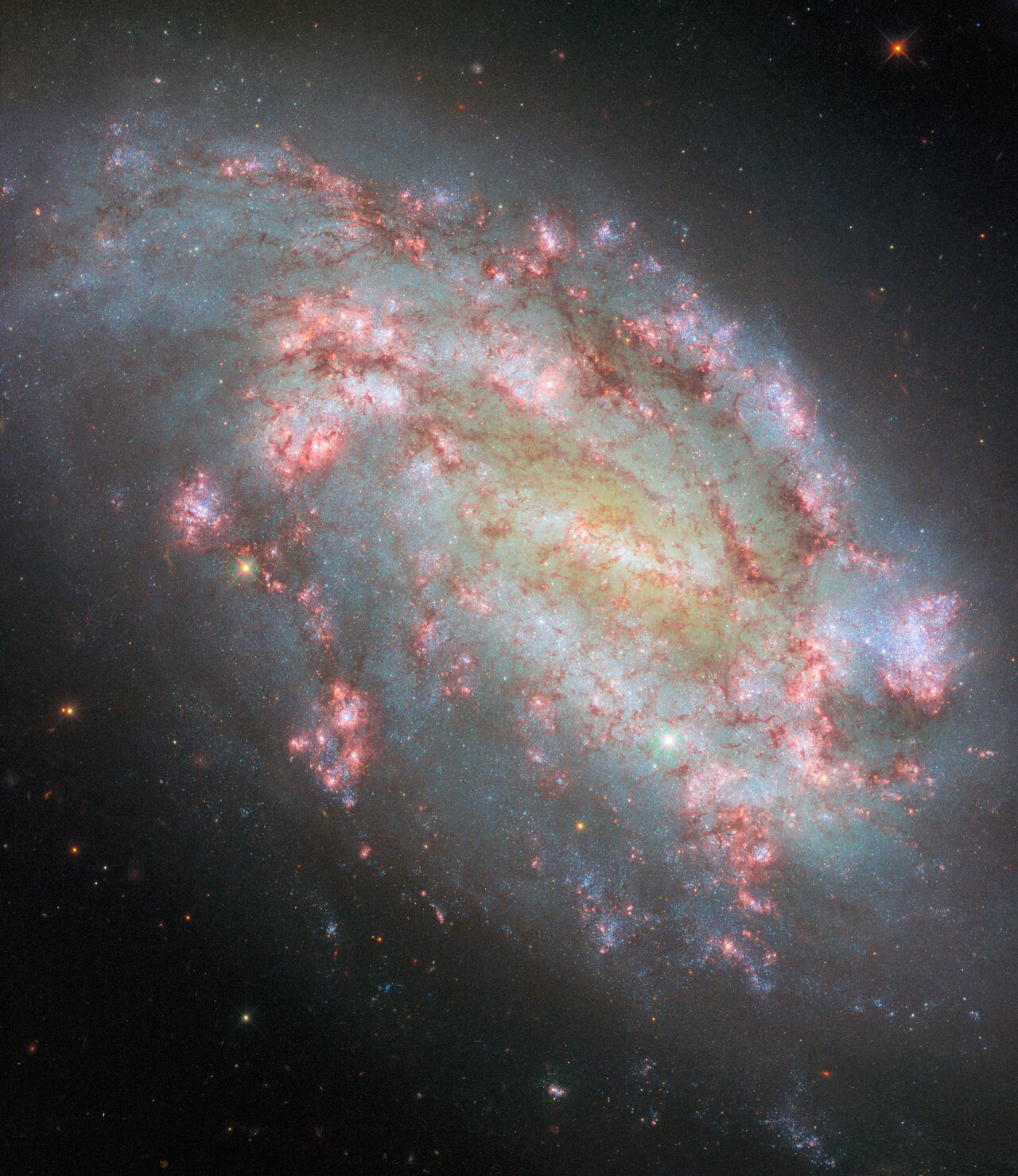Astronomers working with the Hubble Space Telescope have shared another magnificent image. It shows the galaxy NGC 1559.

NGC 1559 is located in the southern constellation Reticulum. Like our Milky Way, it is classified as a spiral galaxy with a bar. On the sky, NGC 1559 neighbors the Large Magellanic Cloud, but it is a deceptive neighborhood. In reality, the galaxy is much farther away. It’s located 35 million light-years away from Earth.
The Hubble image shows a lot of colorful details of NGC 1559. We can see its glowing yellow center. It is surrounded by a blue disk which color is due to the light of older and newer stars. The spiral arms of NGC 1559 are dotted with a large number of pink areas corresponding to regions of active star formation. We can also see dark reddish dust filaments covering the galaxy.
All of this information is available to us because Hubble is able to make observations in different parts of the electromagnetic spectrum —- from ultraviolet to near-infrared. To get the image of the galaxy shown above, astronomers combined ten different images taken by the telescope during six different programs since 2009.
This approach allows us to obtain information about many different astrophysical processes occurring in NGC 1559. As an example, we can give the already mentioned regions of active star formation. Hubble used a red filter at a wavelength of 656 nm to photograph them. The fact is that when new stars are born in a molecular cloud, they emit large amounts of ultraviolet radiation. It ionizes the surrounding hydrogen clouds, causing them to glow at a wavelength of 656 nm. Therefore, astronomers use filters to find and study them, it allows light to pass through only at that wavelength.
Earlier we told you about how Hubble solved the mystery of the missing Martian water.
According to Esahubble


